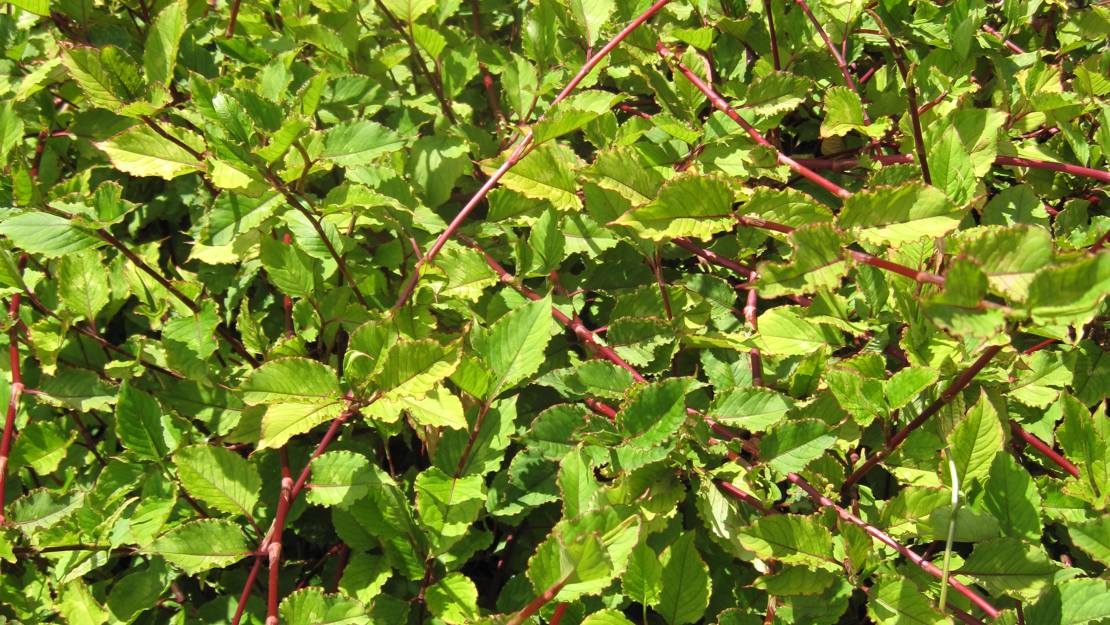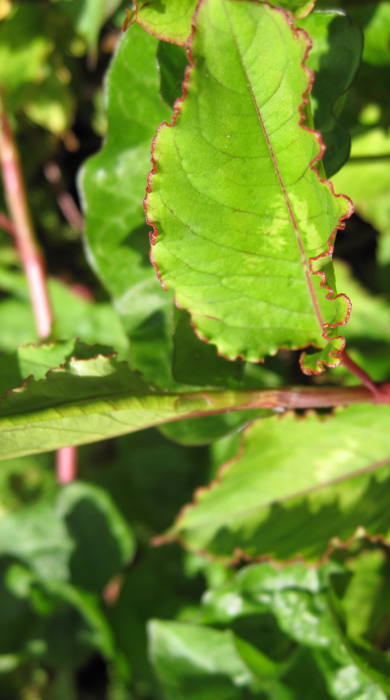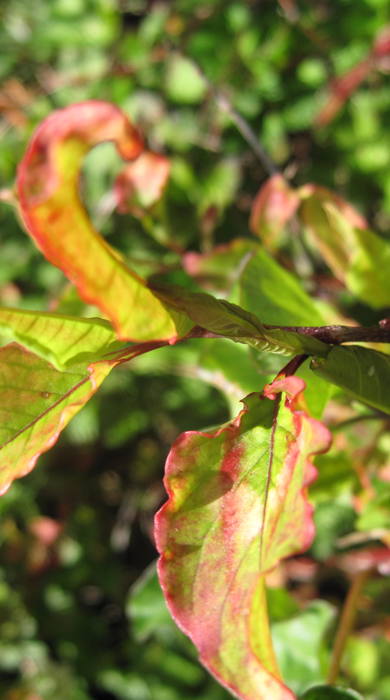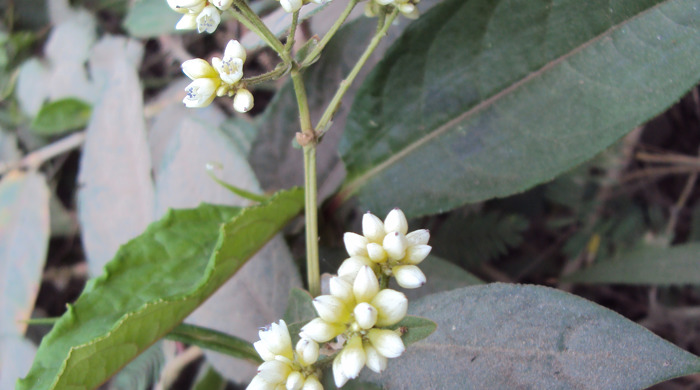Persicaria chinensis
Chinese knotweed
Also known as:
Liane rouge, red bush, huo tan mu
Family: Polygonaceae
Origin: Asia

General description
Perennial, scrambling, mat-forming, herbaceous vine < 1 m tall or climbing to < 10 m. Rhizomes are stout. Leaves are ovate, lanceolate or elliptic, < 16 x 8 cm and smooth or covered in stiff hairs. Flowers are small, white/pink and borne in inflorescences in autumn.
What you need to know
To help protect our environment:
- You must not breed, distribute, release or sell Chinese knotweed. As Chinese knotweed is an Unwanted Organism, these restrictions apply within the Auckland region and across the whole of New Zealand.
Habitats
Forests, riparian margins, grasslands, disturbed sites, crops, roadsides, urban areas.
Dispersal
Seeds dispersed by birds. Vegetative spread from stem and root fragments. Human-mediated dispersal through dumping of garden waste and deliberate plantings.
Impact on environment
Forms dense mats, smothering native vegetation and suppressing seedling recruitment.
Control
Recommended approaches
If found in the environments listed below, please report to Auckland Council.
- Rural areas
- Mapped wetlands
- Properties bordering wetlands.
- within a flood zone of wetlands
For all environments, the recommended approaches are listed below.
Physical control
Manual removal: This is not recommended, as manual removal and disposal may spread the weed further as it regrows from small plant fragments. Auckland Council are carrying out trials on manual removal.
Biocontrol
Biocontrol is currently not available for this species.
Community agrichemical control recommendations
No qualifications: Seek advice from herbicide stockists.
Basic Growsafe certified Foliar spray 200ml Glyphosate 360 + 10ml organosilicon/10L (backpack.
Certified Handler/Experienced agrichemical user: Foliar spray 10g metsulfuron-methyl 600 + 200 Glyphosate +10ml organosilicon/10L (backpack) Or Foliar spray 200ml Glyphosate 360 + 10ml organosilicon/10L (backpack)
* Apply chemicals as per instructions on the herbicide container.
* PPE gear should always be worn when missing and applying chemicals.
Caution: When using any herbicide or pesticide please read the label thoroughly to ensure that all instructions and safety requirements are followed.






